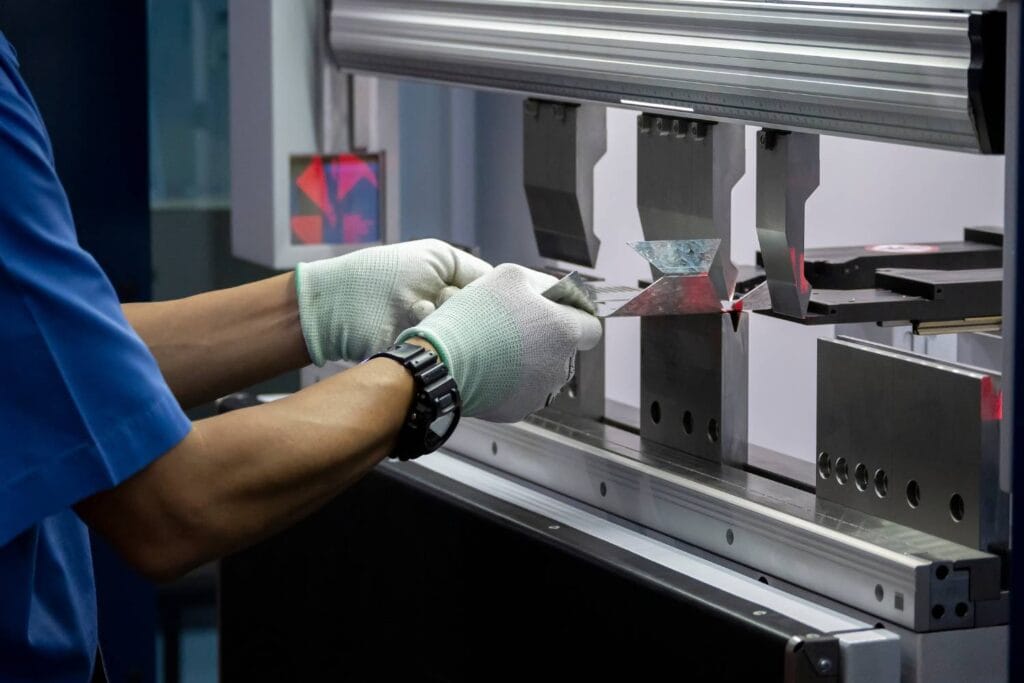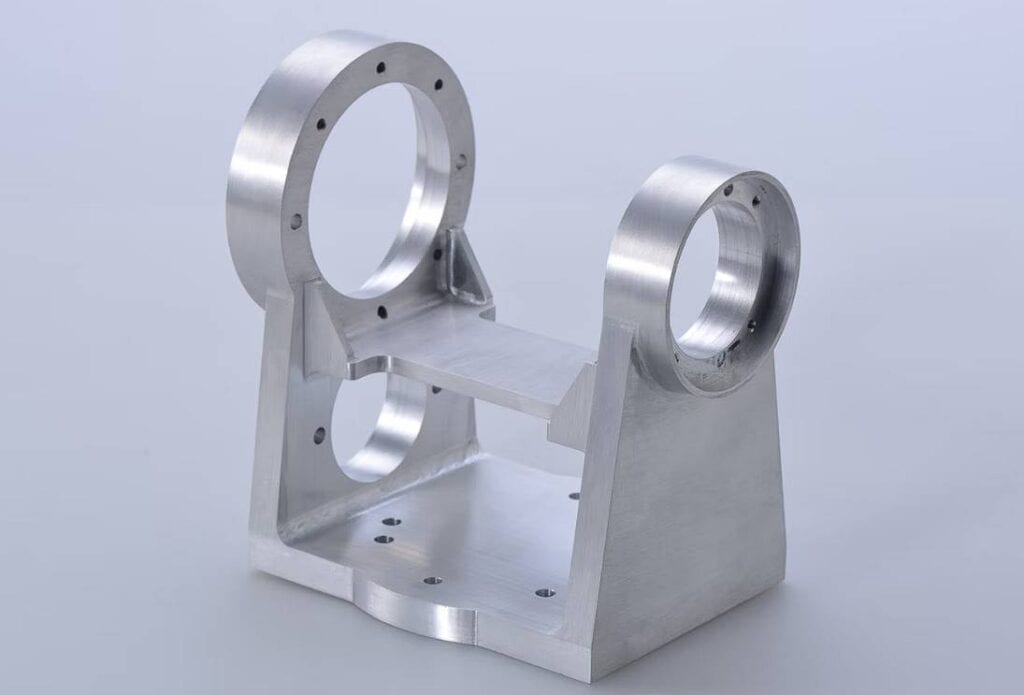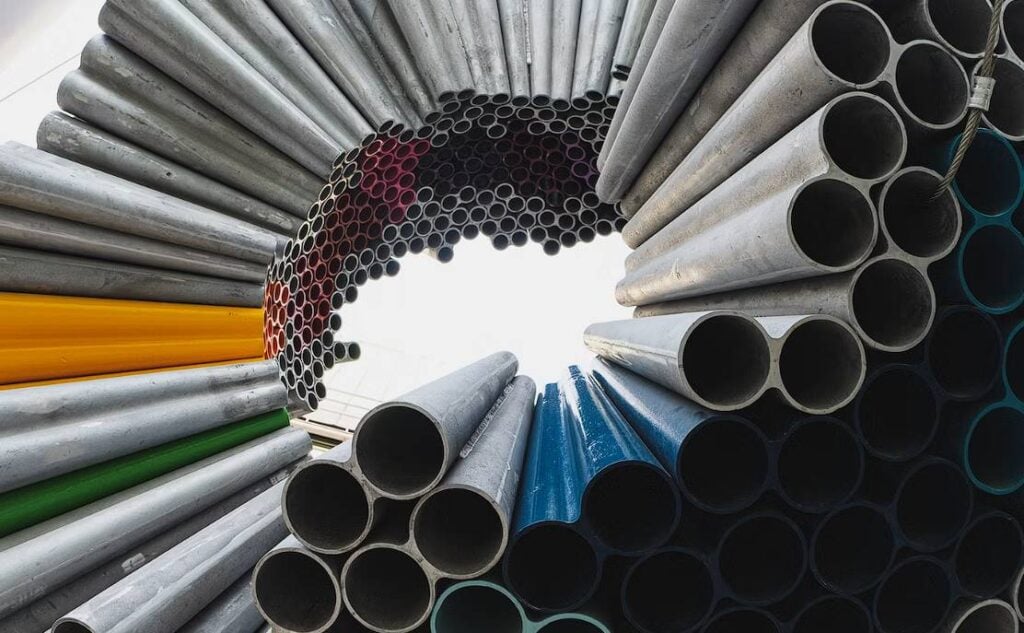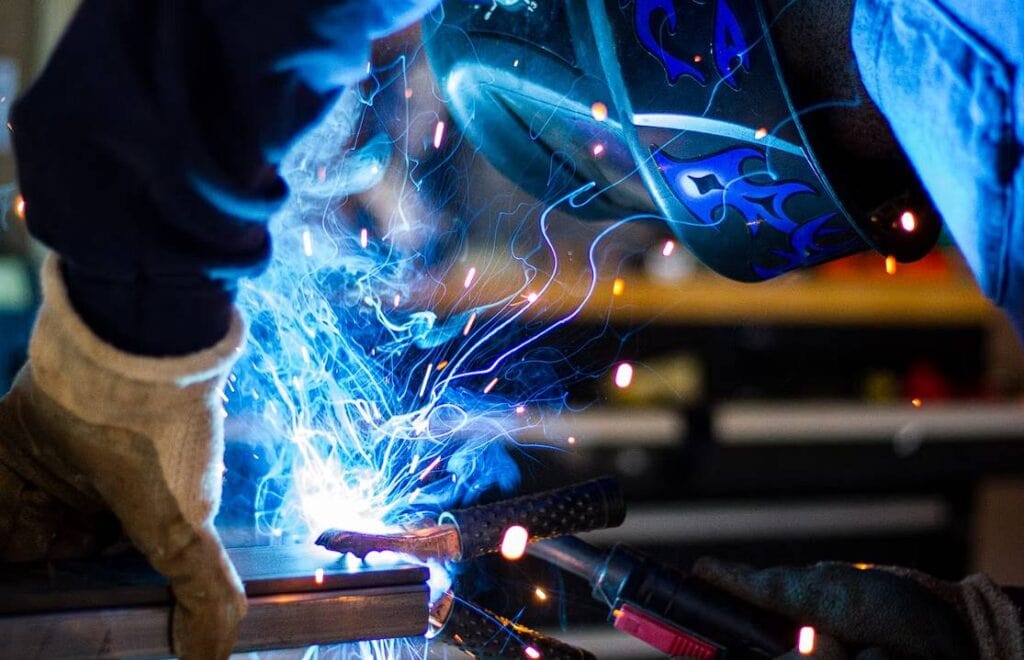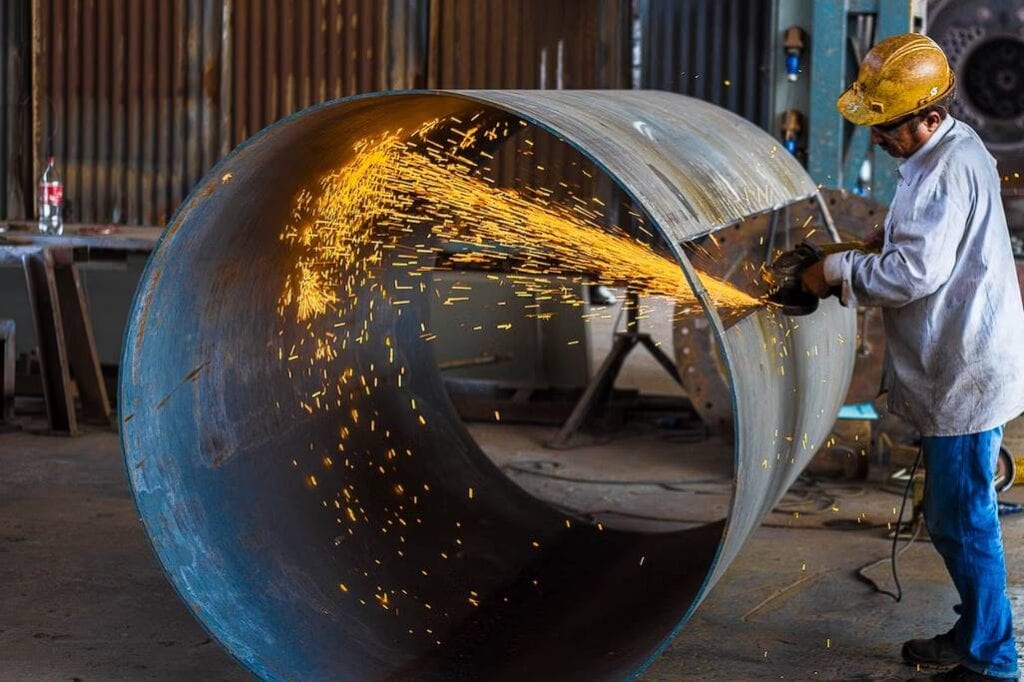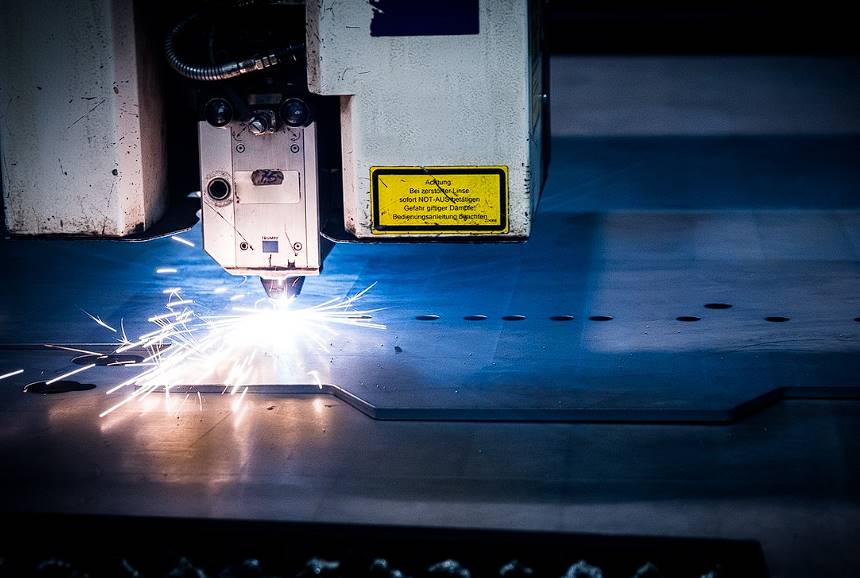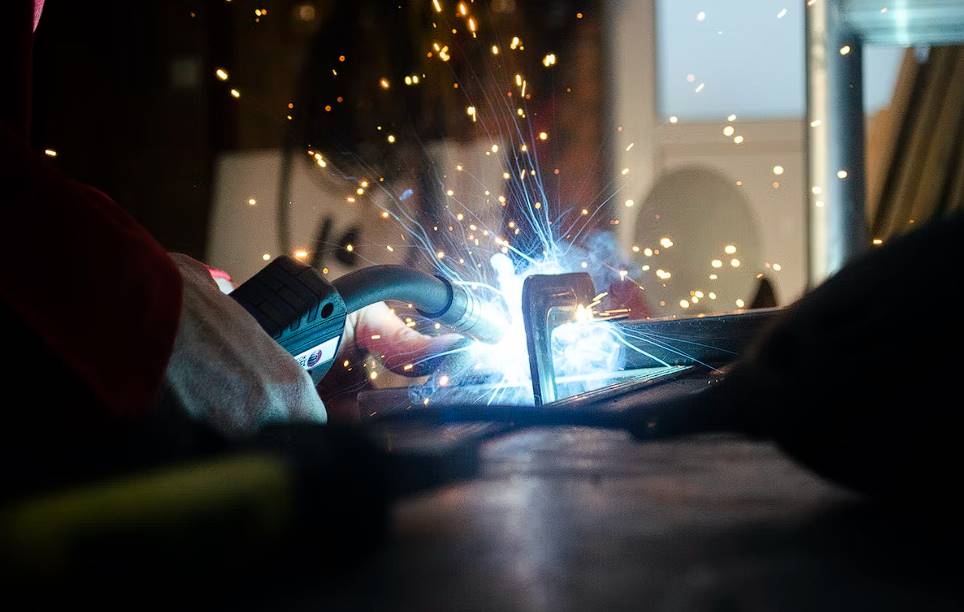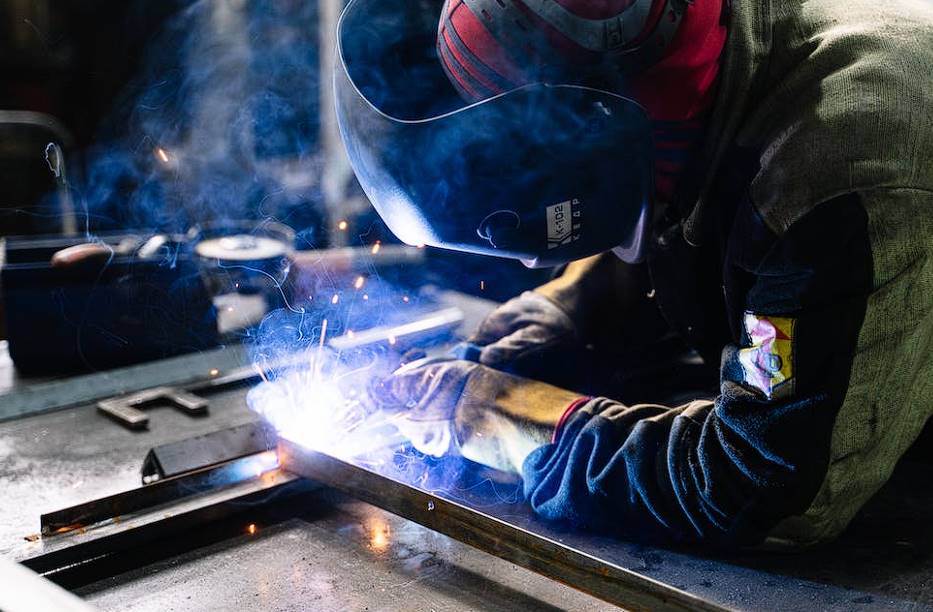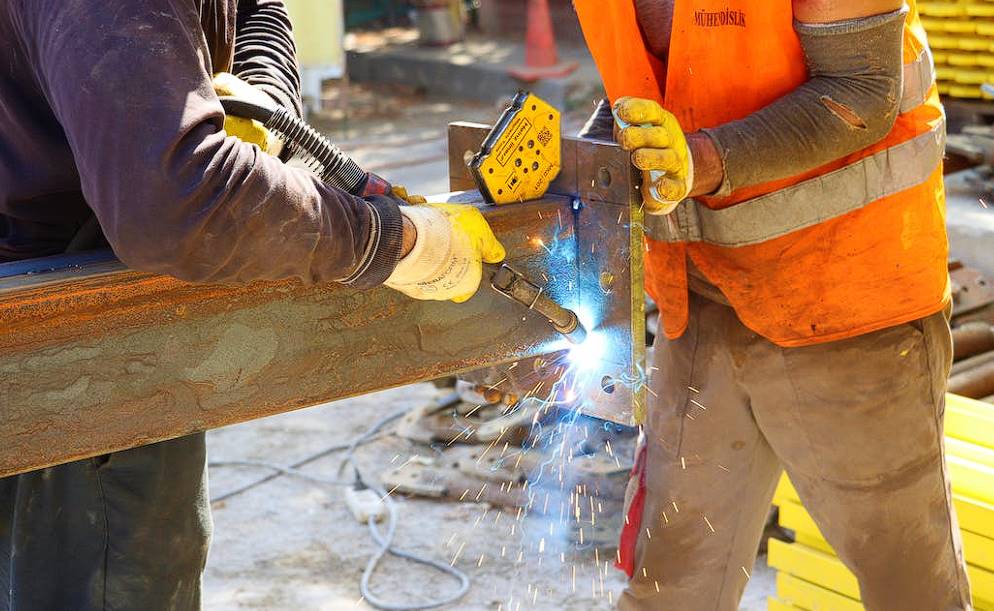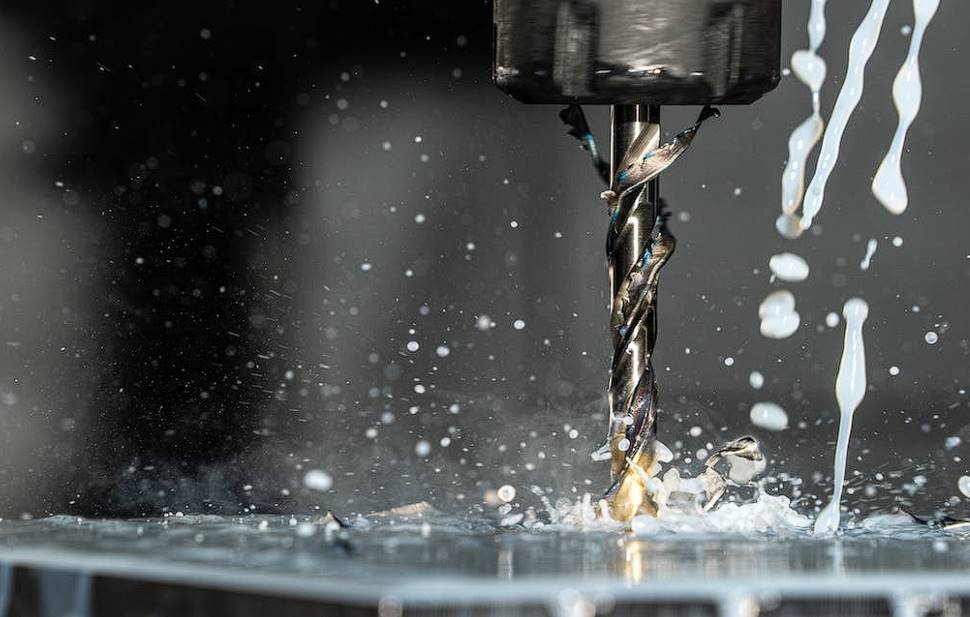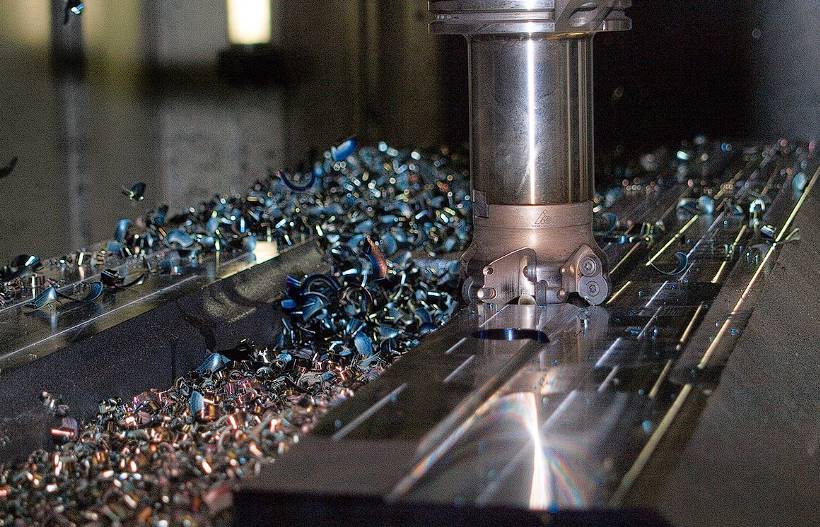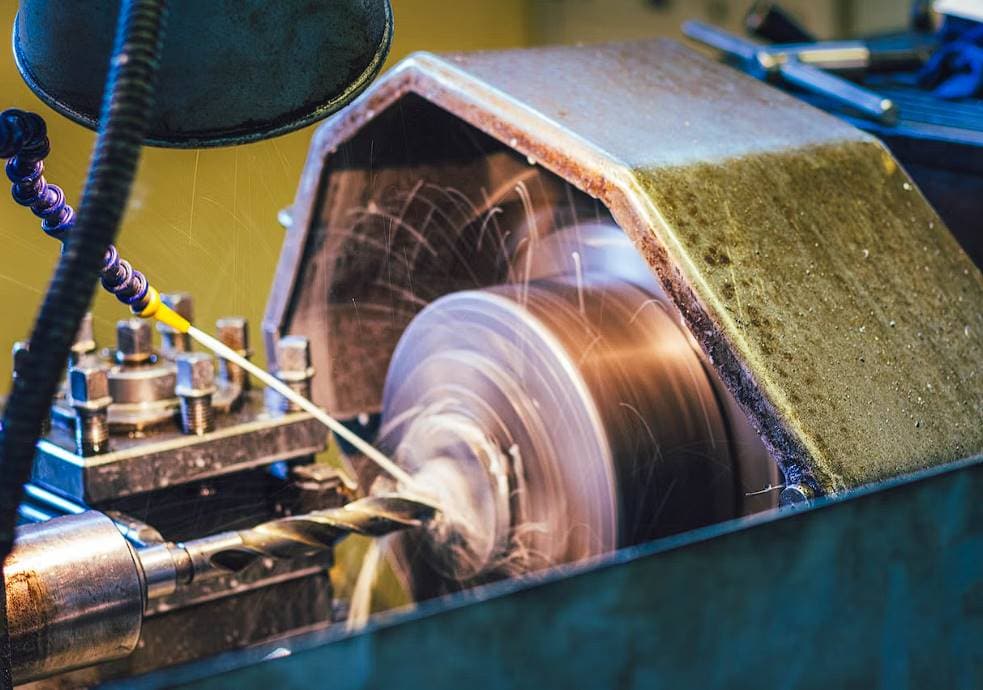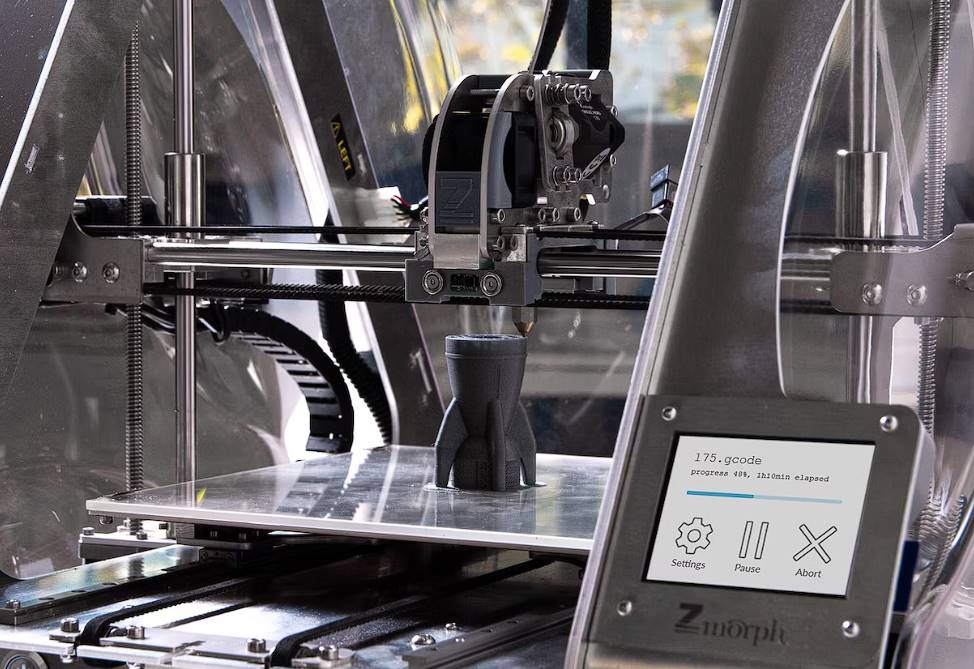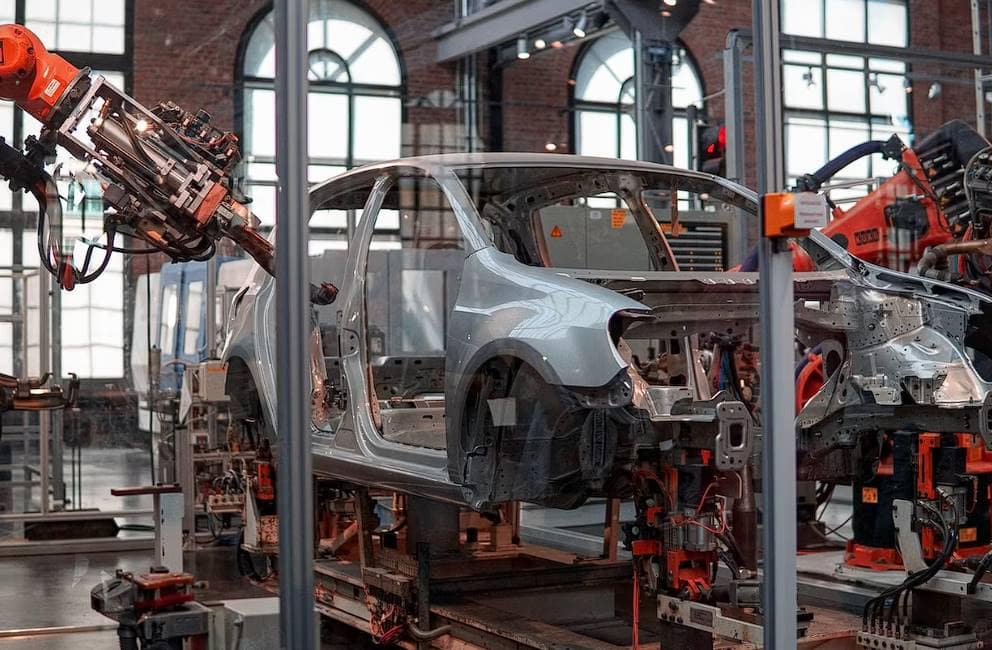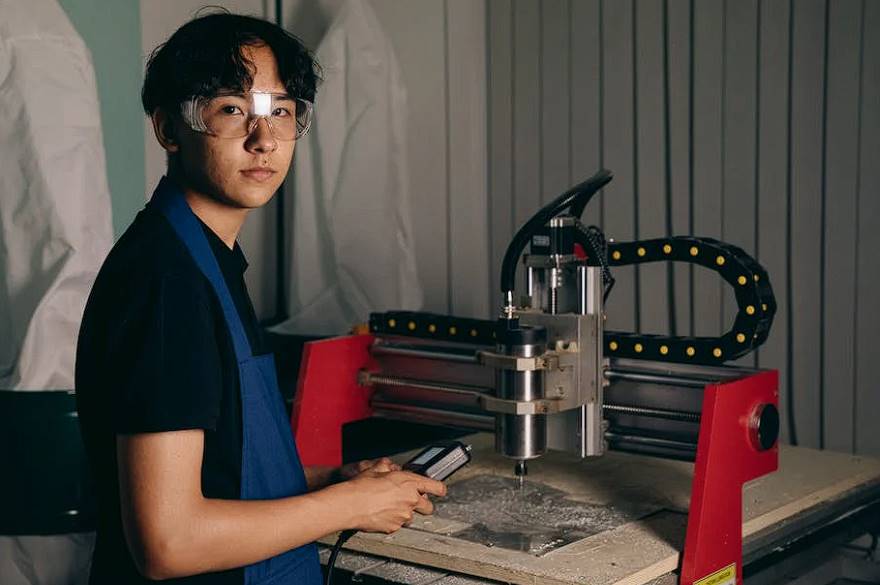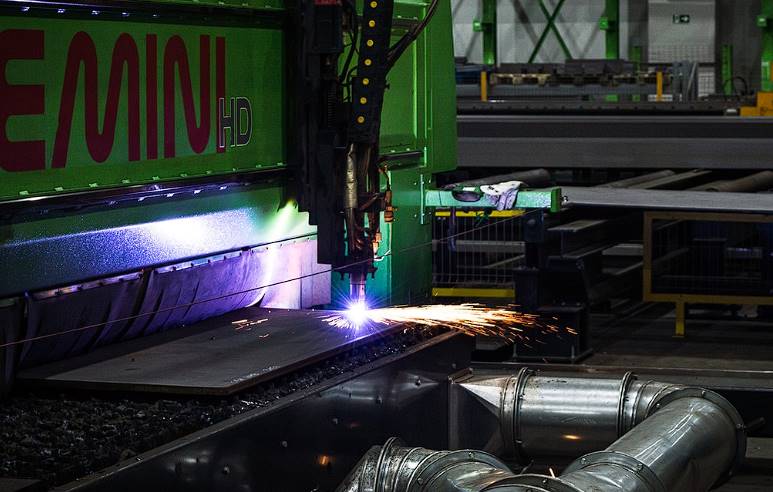Aluminium is a versatile material widely used across various industries, ranging from the aerospace industry to the consumer products industry. Aluminium is known for its lightweight yet robust qualities. Its malleability offers an intriguing challenge for metal fabricators and hobbyists: Is it possible to bend aluminium using a press brake?
Not only is this question vital, but it also brings to light the broader capabilities and limitations of press brake machines when it comes to processing a variety of materials.Within the scope of this blog, we will conduct an in-depth investigation into the process of bending aluminium using a press brake.
In this article, we will discuss the specific features of aluminium that impact the bending process, compare it to the process of bending other metals, and offer some practical advice and considerations to help you produce both exact and efficient bends. Understanding how to manage aluminium in a press brake can open up new options for your ideas and designs, regardless of whether you are an experienced metal fabricator or a do-it-yourself enthusiast.
To enhance your metalworking abilities, we invite you to join us as we dispel the secrets surrounding the bending aluminium process, discuss the technical details, and give expert advice. Not only will you have a definitive response to the question by the time you conclude your adventure, but you will also have gained vital insights into how to make the most of the capabilities of your press brake machine when dealing with aluminium.
Understanding Aluminium's Unique Properties
With its unique blend of properties, aluminium is a versatile material in the manufacturing and metal fabrication industries, particularly in bending operations using a press brake. This article delves into the characteristics of aluminium that make it both a preferred and challenging material for press brake bending.
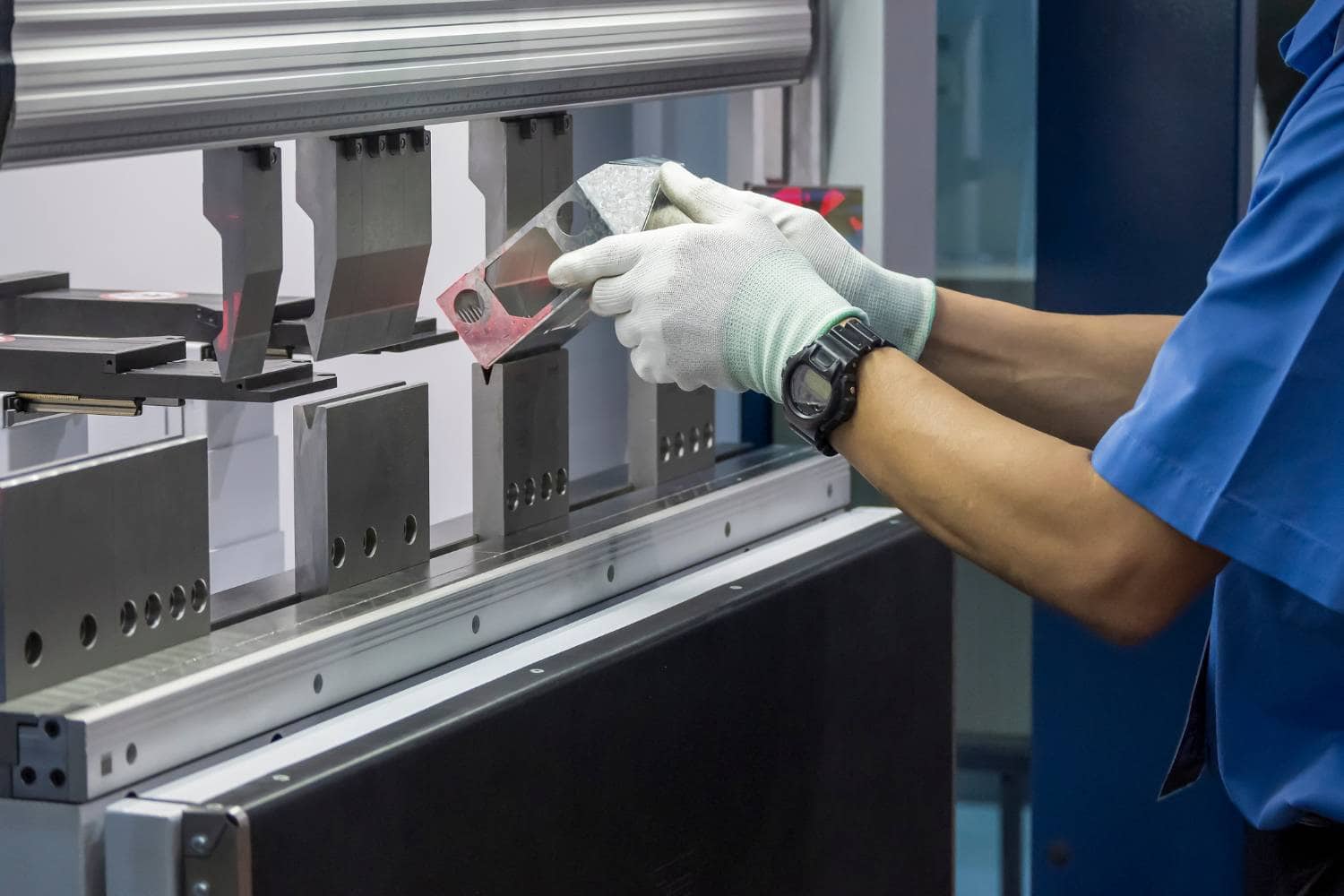
Low Density And High Ductility:
Aluminum's low density, about one-third that of steel, makes it an attractive choice for applications where weight reduction is crucial without compromising strength. Its high flexibility, ranking as the sixth most malleable metal, allows for effective bending into complex shapes without cracking, making it ideal for press brake operations.
Corrosion Resistance:
Aluminium's hallmark property is its natural corrosion resistance, which is attributed to the protective oxide layer that forms spontaneously when exposed to air. This characteristic is particularly beneficial in press brake operations, as the bent components can maintain their integrity and appearance over time, even in corrosive environments.
Thermal Conductivity:
Aluminum's excellent thermal conductivity is a double-edged sword in press brake operations. While beneficial for applications requiring heat dissipation, it can pose challenges during the bending process, as the material may heat up quickly, potentially affecting the precision of the bend if not correctly managed.
Strength-To-Weight Ratio:
The strength-to-weight ratio of aluminium is a critical factor in its selection for bending operations. Aluminium alloys can be designed to achieve high strength while maintaining a low weight, enabling the production of solid and lightweight components suitable for aerospace, automotive, and construction applications.
Malleability And Formability:
Aluminum's malleability and formability are critical to its success in press brake bending. These properties allow aluminium to be shaped into various forms with minimal force, making it suitable for intricate designs and reducing wear and tear on press brake machinery.
Alloying For Enhanced Properties:
The ability to alloy aluminium with elements such as copper, magnesium, and silicon allows for customising its mechanical properties. This alloying can improve aluminium's strength, machinability, and bending performance, making it adaptable to specific press brake operation requirements.
Surface Treatment Compatibility:
Aluminum's compatibility with various surface treatments, such as anodising and painting, enhances its corrosion resistance and allows for aesthetic customisation post-bending. This adaptability makes aluminium a popular choice for decorative and functional components alike.
Challenges In Bending:
Despite its many advantages, aluminium presents unique challenges in press brake operations. Due to its elasticity, aluminium's susceptibility to spring back requires careful planning and adjustment of bending angles to achieve the desired final shape. Additionally, the soft nature of some aluminium alloys can lead to marking or deformation under high clamping pressures, necessitating protective tooling or pads.
Considerations for Press Brake Tooling: Appropriate tooling is crucial for successful aluminium bending operations. Tools with polished surfaces and proper radii can minimise friction and prevent material sticking or damage, ensuring smooth, precise bends.
Preparing To Bend Aluminum
Bending aluminium on a press brake requires precision, understanding the material's properties, and meticulous preparation. Aluminum, with its unique blend of flexibility, strength, and lightweight nature, offers numerous advantages but also presents specific challenges in bending operations. Drawing insights from various expert sources, this guide compiles essential steps and considerations for effectively preparing to bend aluminium on a press brake.
Select The Appropriate Aluminum Alloy:
Aluminium is made from various alloys, each with distinct characteristics and bending capabilities. Alloys like 3003 and 5052 are known for their excellent formability and are generally more suitable for bending. Understanding the specific alloy you're working with is essential for predicting how it will behave under stress and what bending angles are achievable without cracking.
Tooling And Equipment Setup:
The choice of tooling can significantly impact the success of bending aluminium. Opt for press brake dies designed for aluminium bending, which typically have wider radii to reduce the risk of cracking. Ensure that the press brake is correctly set up for the thickness and type of aluminium being bent, considering factors such as die width and punch radius.
Clean The Aluminum Surface:
Aluminium surfaces should be thoroughly cleaned before bending to remove any contaminants that could affect the quality of the bend. Use non-abrasive cleaners to avoid scratching the metal, and ensure the material is dehydrated before proceeding.
Apply A Suitable Lubricant:
Lubrication can minimise friction and protect the aluminium surface during bending. Choose a lubricant compatible with aluminium and the specific conditions of your bending operation. Apply it sparingly to avoid residue buildup.
Calculate Bend Allowance Accurately:
Due to aluminium's tendency to spring back, accurately calculating the bend allowance is more critical than with many other metals. Consider the material thickness, bend radius, and desired angle to ensure the final product meets specifications.
Conduct Test Bends:
Performing test bends on scrap pieces of the same aluminium alloy is wise. This allows you to adjust the press brake settings based on real-world results, compensating for factors like spring back and stress-induced material behaviour.
Adjust Press Brake Settings Accordingly:
Based on the outcomes of your test bends, fine-tune the press brake settings for optimal bending. This may involve adjusting the bending force, speed, and back gauge positions to achieve precise and consistent bends.
Monitor And Control Temperature:
Aluminum's properties can be influenced by temperature. If working in a particularly cold or hot environment, consider the impact on the aluminium and adjust your process to ensure consistent bending results.
Prioritise Safety:
Always adhere to safety protocols when operating a press brake. Wear appropriate personal protective equipment (PPE), and ensure all machine safety features are functional.
Plan For Post-Bending Finishing:
After bending, aluminium parts may require additional finishing steps, such as deburring, cleaning, or applying protective coatings. Planning these steps ensures a seamless transition from bending to final product assembly.
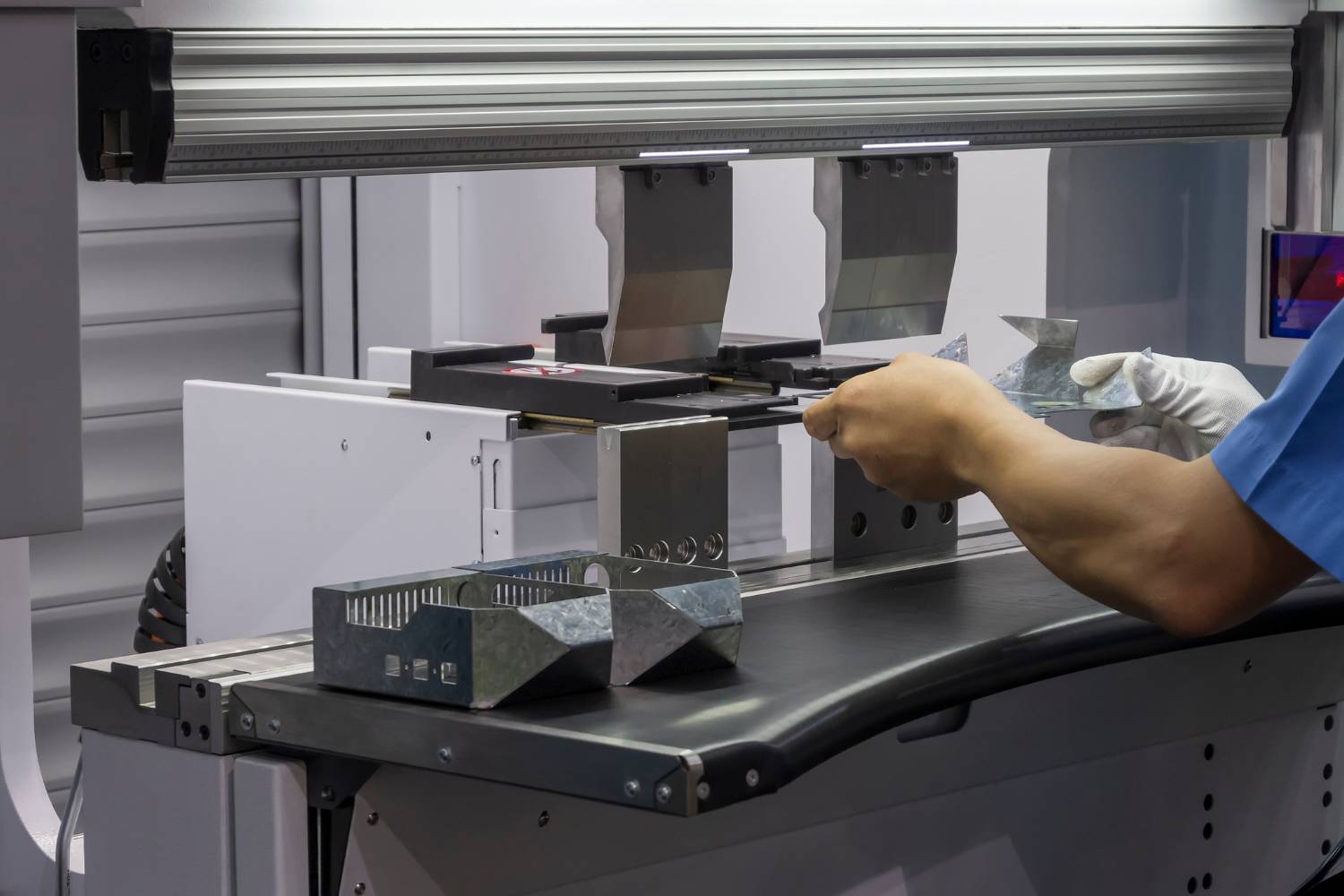
Techniques For Bending Aluminum In A Press Brake
Bending aluminium on a press brake is a nuanced process that combines art and science. Aluminum, known for its lightweight and versatile properties, presents unique bending challenges and opportunities. This guide synthesises insights from industry experts to help you navigate the complexities of bending aluminium on a press brake, ensuring high-quality, precise results for your projects.
Selecting The Right Tooling And Equipment
The choice of tooling and equipment is paramount in bending aluminium. Press brakes equipped with precision tooling designed for aluminium can prevent common issues such as cracking or spring back. Techniques such as bottom and air bending are recommended, focusing on using the correct punch and die configurations to accommodate aluminium's elasticity.
Mitigating Springback
Due to its high elasticity, springback is a common challenge when bending aluminium. Techniques to mitigate springback include using overbend angles, employing specialised tooling, and, in some cases, pre-heating the aluminium to make it more pliable. Understanding the specific alloy's behaviour under stress is crucial for effectively predicting and compensating for springback.
Ensuring Surface Integrity
They maintain the aluminium's surface integrity during bending, mainly for aesthetic or functional applications. Protective measures like using film-coated tooling or applying lubricants can prevent scratches and marring. Additionally, careful handling and setup adjustments are necessary to avoid unwanted creases or deformation.
Leveraging Technology For Precision
Modern press brakes with CNC technology offer unparalleled precision and repeatability in bending aluminium. These machines allow for precise control over bending angles, force, and speed, significantly reducing the margin for error. Utilising software for simulation and programming can further enhance the bending process's efficiency and accuracy.
Continuous Learning And Adaptation
Bending aluminium on a press brake is a continually evolving field, with new alloys, tooling, and techniques regularly introduced. Staying informed about the latest developments and being willing to adapt processes accordingly is vital to mastering aluminium bending. Engaging with industry forums, attending workshops, and collaborating with material suppliers can provide valuable insights and sharpen your skills.
Conclusion
Aluminum, a versatile material used in various industries, is known for its lightweight yet robust qualities. Its malleability challenges metal fabricators and hobbyists to determine if bending aluminium using a press brake is possible. This article explores bending aluminium using a press brake, discussing its unique properties, comparing it to other metals, and offering practical advice for producing exact and efficient bends.
Aluminum's low density and high flexibility make it an ideal choice for weight reduction without compromising strength. Its natural corrosion resistance and excellent thermal conductivity make it suitable for press brake operations. Its strength-to-weight ratio is a critical factor in its selection for bending operations. Its malleability and formability make it suitable for intricate designs and reduce wear and tear on press brake machinery. Aligning aluminium with elements like copper, magnesium, and silicon allows for customising its mechanical properties. Its compatibility with surface treatments like anodising and painting enhances its corrosion resistance and allows for aesthetic customisation post-bending.
However, aluminium presents unique challenges in press brake operations, such as its susceptibility to spring back and the soft nature of some alloys. The selection of appropriate tooling is crucial for successful aluminium bending operations. Tools with polished surfaces and proper radii minimise friction and prevent material sticking or damage, ensuring smooth, precise bends.
Aluminium bending is a complex process that requires careful selection of the proper alloy, tooling, and equipment. Alloys like 3003 and 5052 are ideal for bending due to their excellent formability. The choice of tooling, such as press brake dies, is crucial for reducing the risk of cracking. Clean the aluminium surface thoroughly before bending to prevent contaminants and ensure the material is dry. Apply a suitable lubricant to minimise friction and protect the aluminium surface. Accurately calculate the bend allowance, considering the material thickness, bend radius, and desired angle.
Conduct test bends on scrap aluminium alloy to adjust press brake settings based on real-world results. Monitor and control the temperature to ensure consistent bending results. Prioritise safety by wearing appropriate PPE and ensuring all safety features are functional.
Plan for post-bending finishing steps, such as deburring, cleaning, or applying protective coatings, to ensure a seamless transition from bending to final product assembly.
Content Summary
- Aluminium is a versatile and widely used material in aerospace and consumer products due to its lightweight yet robust qualities.
- The malleability of aluminium poses an intriguing challenge for metal fabricators and hobbyists alike, especially when considering bending it using a press brake.
- This blog explores bending aluminium with a press brake, focusing on the material's specific features that impact the bending process.
- By understanding how to manage aluminium in a press brake, new options for designs and ideas can be unlocked, whether for experienced fabricators or DIY enthusiasts.
- Aluminium's low density makes it an attractive choice for weight reduction applications without sacrificing strength.
- Its high flexibility allows for effective bending into complex shapes without cracking, which is ideal for press brake operations.
- Aluminium's natural corrosion resistance, due to a protective oxide layer, benefits press brake operations by maintaining component integrity over time.
- The material's excellent thermal conductivity can pose challenges during bending, as it may affect precision if not appropriately managed.
- Aluminium's strength-to-weight ratio is crucial for bending operations, enabling the production of solid and lightweight components.
- The malleability and formability of aluminium make it suitable for intricate designs and reduce wear on press brake machinery.
- Alloying aluminium with elements like copper and magnesium can improve its bending performance, making it adaptable to specific requirements.
- Aluminium's compatibility with surface treatments allows for aesthetic customisation post-bending, making it popular for decorative components.
- Challenges in bending aluminium include its susceptibility to spring back and potential marking or deformation under high clamping pressures.
- Selecting appropriate tooling, with polished surfaces and proper radii, is crucial for successful aluminium bending operations.
- Bending aluminium requires precision and understanding of the material's properties, necessitating meticulous preparation.
- Choosing a suitable aluminium alloy is essential. Alloys like 3003 and 5052 are known for their excellent formability and suitability for bending.
- Tooling and equipment setup should be tailored to the thickness and type of aluminium being bent, with considerations for die width and punch radius.
- Cleaning the aluminium surface before bending is essential to remove contaminants that could affect bend quality.
- A suitable lubricant can minimise friction and protect the aluminium surface during bending.
- Accurately calculating bend allowance is critical due to aluminium's tendency to spring back, affecting the final product's specifications.
- Conducting test bends on scrap pieces allows for adjustments based on real-world results, compensating for factors like spring back.
- Adjusting press brake settings based on test bend outcomes is necessary for achieving precise and consistent bends.
- Monitoring and controlling temperature is essential, as environmental conditions can influence aluminium's properties.
- Prioritising safety and adhering to protocols when operating a press brake is essential for preventing accidents.
- Planning for post-bending finishing steps ensures a seamless transition from bending to final product assembly.
- Selecting the proper tooling and equipment is paramount in bending aluminium to prevent issues like cracking or springback.
- Mitigating spring back involves using overbend angles, specialised tooling, and sometimes pre-heating the aluminium.
- Maintaining the aluminium's surface integrity during bending is crucial for aesthetic or functional applications.
- Leveraging CNC technology in modern press brakes offers precision and repeatability in bending aluminium.
- Continuous learning and adaptation are essential to mastering aluminium bending, with new alloys and techniques regularly introduced.
- Understanding the specific alloy being worked with is crucial for predicting its behaviour under stress during bending.
- Opting for press brake dies designed for aluminium bending can significantly impact the operation's success.
- Lubrication helps protect the aluminium surface and minimise friction during the bending process.
- Due to aluminium's elasticity, careful planning and adjustment of bending angles are required to achieve the desired shape.
- The soft nature of some aluminium alloys necessitates using protective tooling or pads to prevent marking or deformation.
- Aluminium's properties, such as thermal conductivity and corrosion resistance, play significant roles in press brake operations.
- The ability to alloy aluminium for enhanced properties allows for customising mechanical properties for specific bending requirements.
- Aluminium's compatibility with post-bending surface treatments adds to its manufacturing and fabrication versatility.
- The challenges aluminium presents in press brake operations highlight the importance of understanding material properties.
- Techniques such as bottom and air bending are recommended to accommodate aluminium's elasticity in press brake operations.
- Understanding aluminium's behaviour under stress is crucial for effectively compensating for spring back.
- Protective measures during bending can prevent scratches and marring on aluminium surfaces.
- CNC technology enhances the efficiency and accuracy of the aluminium bending process.
- Staying informed about developments in aluminium bending and being willing to adapt processes is essential for fabricators.
- Engaging with industry forums and collaborating with material suppliers can provide valuable insights into aluminium bending.
- The selection of appropriate aluminium alloy, tooling, and equipment setup is critical for successful bending operations.
- Cleaning the aluminium surface and applying suitable lubricant are preparatory steps that affect the quality of the bend.
- Accurate calculation of bend allowance and conducting test bends contribute to precise bending outcomes.
- Adjusting press brake settings based on test results and monitoring temperature are essential for consistent bending results.
- Planning for post-bending finishing and prioritising safety are essential considerations in the aluminium bending process.
Frequently Asked Questions
Yes, aluminium can be bent using a press brake. Due to its malleability and lightweight properties, aluminium is suitable for bending operations, provided the correct settings and tooling are used.
Aluminum's unique properties include:
- It's low density.
- High flexibility.
- Natural corrosion resistance.
- Excellent thermal conductivity.
- High strength-to-weight ratio.
These characteristics influence how aluminium behaves during the bending process, affecting factors like spring back and the choice of tooling.
Aluminum's thermal conductivity can be challenging during bending because the material may heat up quickly. Careful management is required to ensure the precision of the bend is not affected by temperature changes during the operation.
Alloys such as 3003 and 5052 are known for their excellent formability and are generally more suitable for bending operations. These alloys offer a balance between strength and malleability, making them ideal for a variety of bending applications.
Springback can be mitigated by using overbend angles, employing specialised tooling designed for aluminium, and, in some cases, pre-heating the aluminium to make it more pliable. Adjustments based on the specific alloy's behaviour under stress are also crucial.

